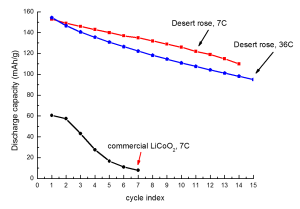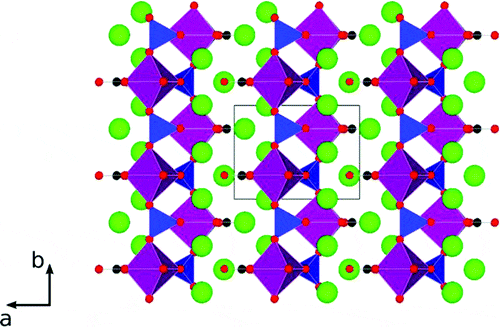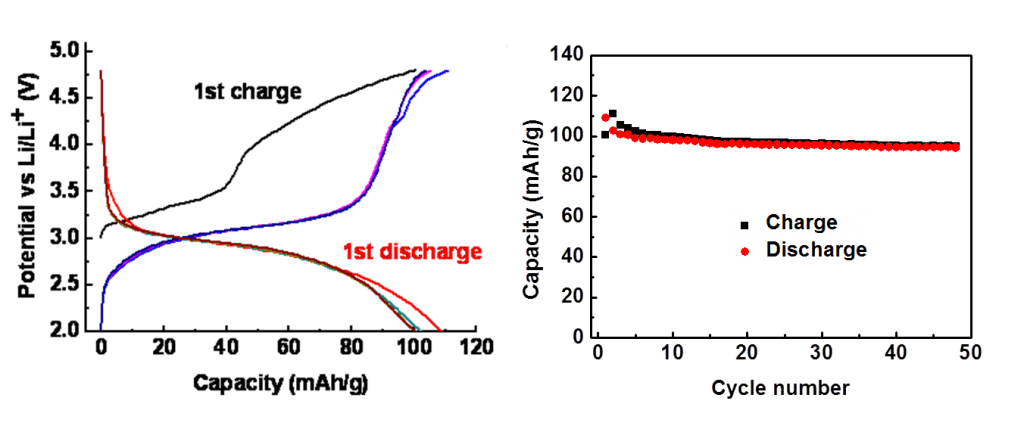In the past decade, the fast increase of energy consumption and environmental problems caused by the combustion of fossil fuels have raised global interests in renewable and clean energy sources. However, electricity generated by renewable sources such as solar, wind, or wave is intermittent. Energy storage units to balance the source variability and level the load are critical for the utilization of these energy sources. As a high efficiency energy storage/conversion device, batteries are considered to be a promising solution as backup and buffering energy supply for electric grids. Batteries can also be used as the power source for transportation, such as in electric vehicles (EVs), hybrid electric vehicles (HEVs), or plug-in hybrid electric vehicles (PHEVs), which can greatly reduce the emission of green house gases.
Improving the performance existing electrode materials by novel approaches, such as crystal engineering:
example: Synthesis of “Desert Rose” LiCoO2”. The unique 3-D nanostructure of desert rose LiCoO2 significantly improved the rate performance.
Adv. Mater. Chen HL, et al. 2008
Designing and searching of new electrode materials:
Example: Synthesis and electrochemical testing of a group of new cathode materials for lithium ion batteries: the carbonophosphates.
Chem. Mater. Chen HL, et al. 2011




